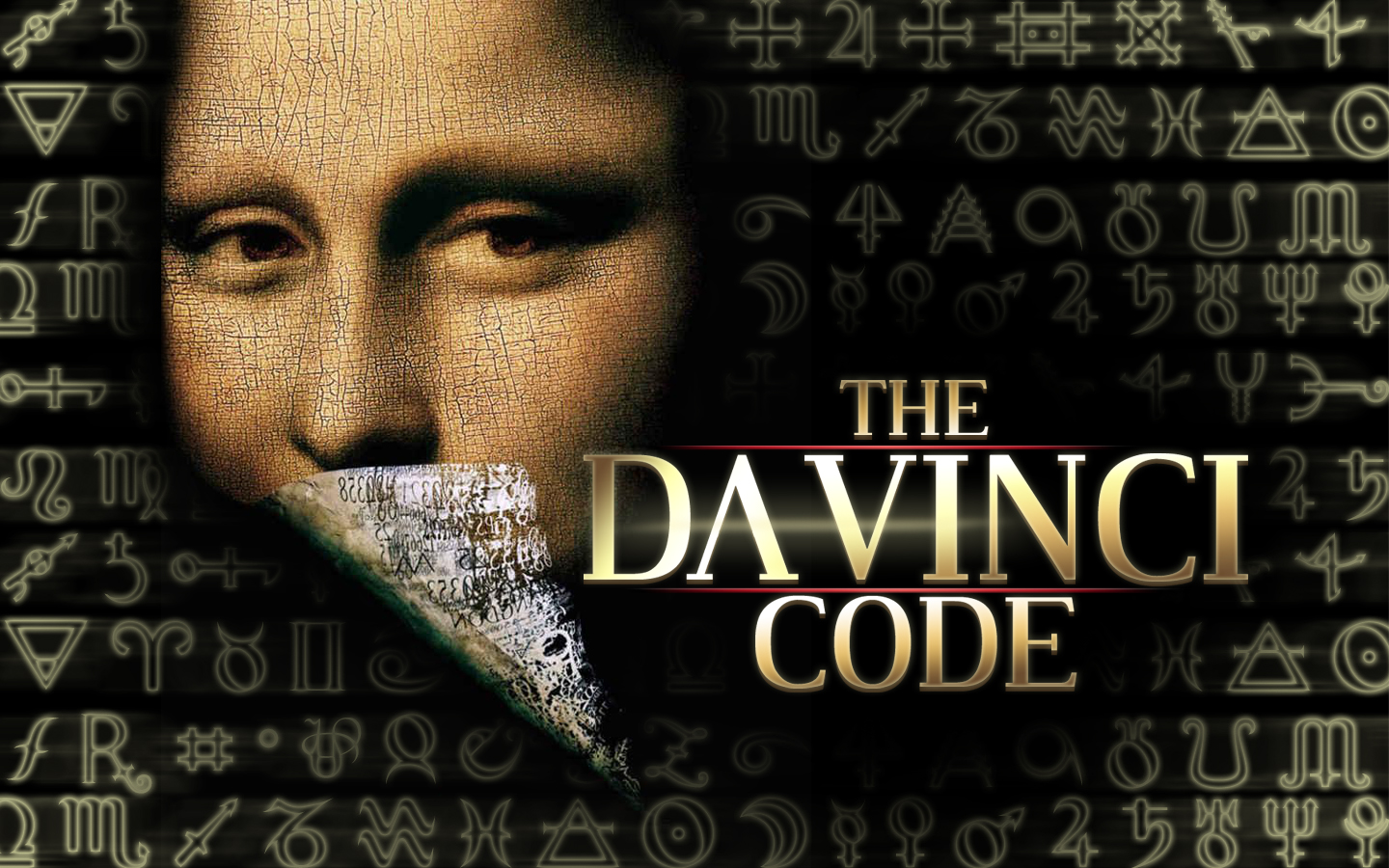The Da Vinci Code: Themes, Characters, And Literary Devices

Table of Contents
Exploring the Central Themes of The Da Vinci Code
Religious Conspiracy and the Suppression of Truth
The Da Vinci Code challenges traditional interpretations of Christianity, presenting a narrative that alleges a deliberate suppression of historical truths by the Catholic Church. The novel questions established dogma and proposes alternative perspectives on religious history. This challenge to orthodoxy is a central theme, fueling much of the novel's suspense and controversy.
- The Priory of Sion: The novel introduces the Priory of Sion, a fictional organization purportedly protecting secrets about Jesus Christ and Mary Magdalene. This fictional group adds a layer of intrigue to the narrative, further questioning the established historical record.
- The Holy Grail's True Meaning: The novel reframes the Holy Grail, moving beyond its traditional religious interpretation to represent Mary Magdalene's lineage and the continuation of Jesus's bloodline. This reinterpretation is crucial to understanding the novel's central conflict.
- The Suppression of Female Figures in Religious History: The Da Vinci Code highlights the alleged marginalization of women in religious history, specifically focusing on the role of Mary Magdalene and her supposed importance to early Christianity. This narrative challenges patriarchal interpretations of religious texts and tradition.
The Search for Historical Truth and the Power of Symbols
The novel masterfully weaves together real historical figures and events with fictional elements to create a compelling narrative centered around the search for hidden knowledge. Leonardo da Vinci, Mary Magdalene, and other historical figures are depicted within a context that questions accepted historical narratives.
- Decoding Da Vinci's Paintings: Da Vinci's art becomes a key element in the puzzle, with his paintings containing hidden symbols and clues that the protagonists must decipher. The novel utilizes the artistic techniques and potential hidden meanings within his works to enhance its mystery.
- The Significance of the Rose Line: This fictional geographical line acts as a crucial element in guiding the protagonists through their journey, connecting locations and symbols relevant to the storyline. The Rose Line exemplifies the novel's use of symbolic mapping to guide the narrative.
- The Interpretation of Religious Iconography: The novel delves into the symbolism inherent in religious art and iconography, showing how these elements can be interpreted in ways that contradict traditional understandings. This exploration enhances the mystery and encourages readers to question their own assumptions.
Faith, Reason, and the Conflict Between Science and Religion
A key tension in The Da Vinci Code lies in the conflict between faith and reason, science and religion. The characters grapple with reconciling their beliefs with newly discovered evidence, highlighting the ongoing debate surrounding religious faith and scientific inquiry.
- Robert Langdon's Role as a Scholar Bridging the Gap: Langdon, as a symbologist, represents a bridge between the scholarly examination of symbols and religious belief. He embodies the attempt to reconcile these seemingly opposing forces.
- Sophie Neveu's Struggle with Her Faith: Neveu's personal journey involves questioning her own faith in light of the revelations uncovered throughout the novel. Her internal conflict mirrors the novel's exploration of the tensions between religious belief and empirical evidence.
- The Opposing Viewpoints of the Antagonists: The antagonists' unwavering faith and their willingness to use violence highlight the dangers of blindly adhering to dogma without critical analysis or questioning. Their actions serve as a counterpoint to the protagonists' more questioning approach.
Key Characters and Their Roles in the Narrative
Robert Langdon – The Symbologist
Robert Langdon, a Harvard professor of religious symbology, acts as the intellectual center of the novel. His expertise in deciphering codes and symbols is crucial to solving the mystery at the heart of the plot.
- His Relationship with Sophie: Langdon's relationship with Sophie is central to the narrative, developing from a professional association to a deeper bond built on shared experiences and trust.
- His Intellectual Prowess: Langdon's sharp mind and ability to analyze complex symbols are essential for unraveling the plot. His intellectual prowess drives the narrative forward.
- His Moral Compass: Langdon's strong moral compass guides his actions, even when faced with danger. His adherence to ethical principles makes him a relatable and sympathetic protagonist.
Sophie Neveu – The Cryptologist
Sophie Neveu, a French cryptologist, is a central character whose personal journey is intertwined with the novel's mystery. Her connection to the Priory of Sion and her family history form crucial elements of the plot.
- Her Family History: Sophie's family history is a key driver of the plot, linking her directly to the central mystery and the secrets of the Priory of Sion.
- Her Relationship with Langdon: Her collaboration with Langdon is essential to the narrative's progression. Their dynamic evolves as they face challenges together.
- Her Evolving Understanding of Her Heritage: As the plot unfolds, Sophie’s understanding of her family and heritage changes profoundly, leading to personal growth and transformation.
Silas – The Assassin
Silas, a physically imposing albino monk, serves as the novel's antagonist. His religious fervor and dedication to the Opus Dei fuel his violent actions.
- His Religious Fervor: Silas's blind faith and extreme devotion to the Opus Dei drive his actions, representing a dangerous manifestation of religious extremism.
- His Obedience to the Opus Dei: Silas's obedience highlights the potential for manipulation within religious organizations and the dangers of unquestioning faith.
- His Conflicted Conscience: Despite his violence, hints of a conflicted conscience suggest a more complex character than a simple villain, adding depth to the narrative.
Masterful Literary Devices Employed in The Da Vinci Code
Suspense and Mystery
Dan Brown masterfully employs various techniques to build suspense and maintain reader engagement. The pacing and structure of the plot are carefully crafted to keep readers guessing.
- Cliffhangers: The novel uses cliffhangers strategically throughout to maintain tension and anticipation.
- Red Herrings: Red herrings are introduced to mislead the reader and add an extra layer of intrigue.
- Gradual Revelations of Information: Information is revealed gradually, creating a sense of mystery and prompting the reader to draw their own conclusions.
Symbolism and Allegory
Symbolism and allegory are heavily utilized in The Da Vinci Code. The novel is rich in symbolism, offering multiple layers of meaning and interpretation.
- The Holy Grail as a Metaphor: The Grail transcends its traditional religious interpretation, serving as a metaphor for Mary Magdalene's lineage and the suppressed truth.
- The Lion and the Unicorn: These symbolic creatures, often representing opposing forces, appear in the novel, adding to its allegorical richness.
- The Use of Sacred Geometry: Sacred geometry is incorporated into the narrative, adding another layer of symbolic complexity.
Point of View and Narrative Structure
The novel's narrative perspective and structure contribute significantly to its impact. The use of third-person narration allows for shifts in focus between characters, creating suspense and enriching the narrative.
- Third-Person Narration: The third-person narrative allows for broader perspective, showing the events from different characters' points of view.
- Shifting Focus Between Characters: The narrative shifts between multiple characters, providing a more comprehensive view of the story and adding to the suspense.
- The Creation of Suspense Through Limited Perspectives: The reader's knowledge is often limited to a single character's perspective at any given time, enhancing the mystery and suspense.
Conclusion
The Da Vinci Code, with its intricate plot, compelling characters, and masterful use of literary devices, has left an enduring mark on popular culture. From its exploration of religious conspiracy and the suppression of truth to its intriguing use of symbolism and historical context, the novel continues to spark debate and discussion. By understanding the themes, characters, and literary techniques employed by Dan Brown, we gain a deeper appreciation for this complex and captivating work.
Call to Action: Delve deeper into the mysteries surrounding The Da Vinci Code. Explore its themes, dissect its characters, and analyze its literary devices to fully appreciate the lasting impact of this literary phenomenon. Start your own investigation today!

Featured Posts
-
 Tzortz Mpalntok I Atopima Toy Proponiti Tis Sefilnt Gioynaitent Meta To Ntermpi
May 13, 2025
Tzortz Mpalntok I Atopima Toy Proponiti Tis Sefilnt Gioynaitent Meta To Ntermpi
May 13, 2025 -
 Witnessing Japans Cherry Blossoms Your Springwatch Itinerary
May 13, 2025
Witnessing Japans Cherry Blossoms Your Springwatch Itinerary
May 13, 2025 -
 Unexpected Murder Rocks Elsbeth Season 2 Episode 18
May 13, 2025
Unexpected Murder Rocks Elsbeth Season 2 Episode 18
May 13, 2025 -
 Sissal Til Eurovision 2025 Danmarks Kandidat
May 13, 2025
Sissal Til Eurovision 2025 Danmarks Kandidat
May 13, 2025 -
 Ncaa Tournament Oregon Ducks Womens Basketball Loses To Duke
May 13, 2025
Ncaa Tournament Oregon Ducks Womens Basketball Loses To Duke
May 13, 2025
Latest Posts
-
 Renowned Cinematographer Lin Tsan Ting Dies At 94 Golden Horse Legacy Lives On
May 13, 2025
Renowned Cinematographer Lin Tsan Ting Dies At 94 Golden Horse Legacy Lives On
May 13, 2025 -
 Golden Horse Awards Winner Lin Tsan Ting A Life In Cinematography
May 13, 2025
Golden Horse Awards Winner Lin Tsan Ting A Life In Cinematography
May 13, 2025 -
 5 Of Manufacturers Prioritize Cybersecurity A 41 Point Investment Surge
May 13, 2025
5 Of Manufacturers Prioritize Cybersecurity A 41 Point Investment Surge
May 13, 2025 -
 Renowned Cinematographer And Golden Horse Awards Recipient Lin Tsan Ting Dies At 94
May 13, 2025
Renowned Cinematographer And Golden Horse Awards Recipient Lin Tsan Ting Dies At 94
May 13, 2025 -
 Golden Horse Awards Winner Lin Tsan Ting Dead At 94 A Legacy Of Cinematography
May 13, 2025
Golden Horse Awards Winner Lin Tsan Ting Dead At 94 A Legacy Of Cinematography
May 13, 2025
